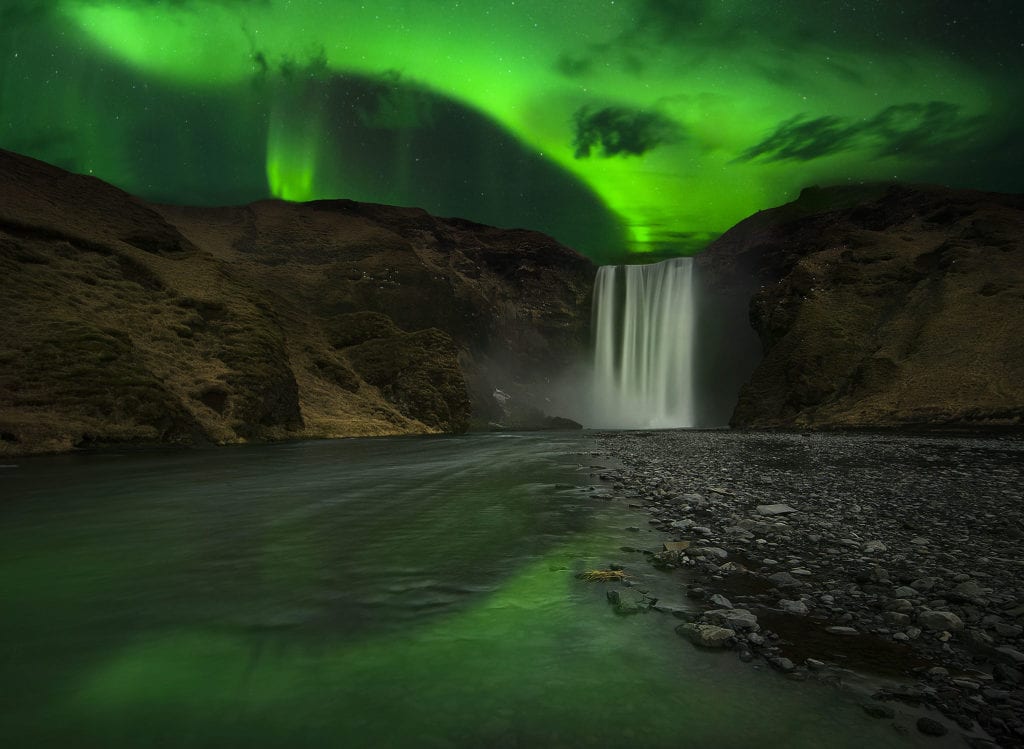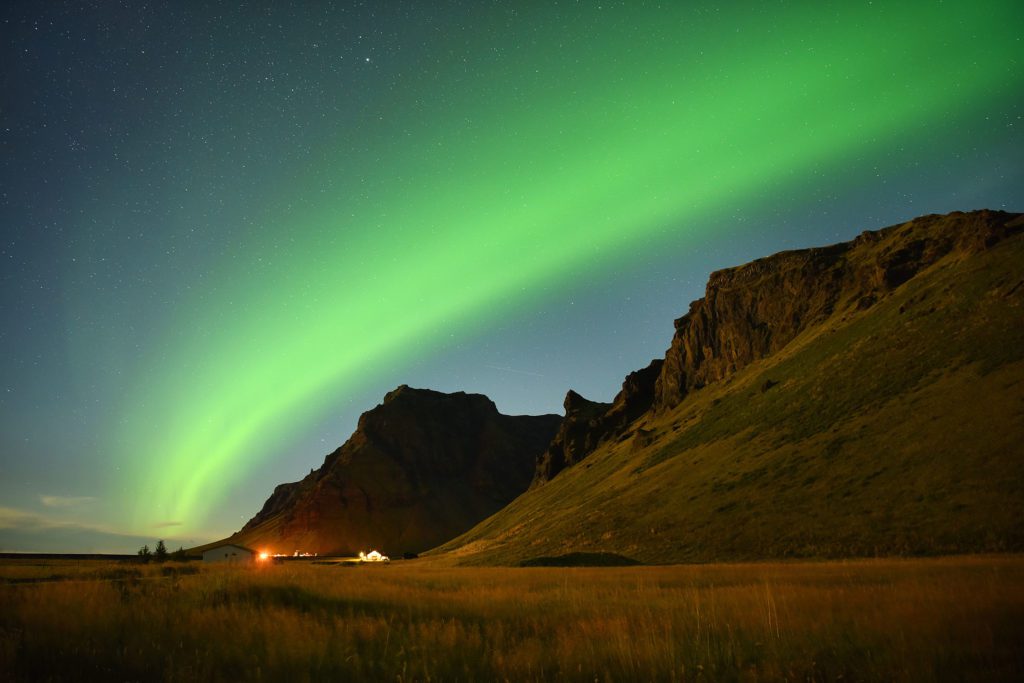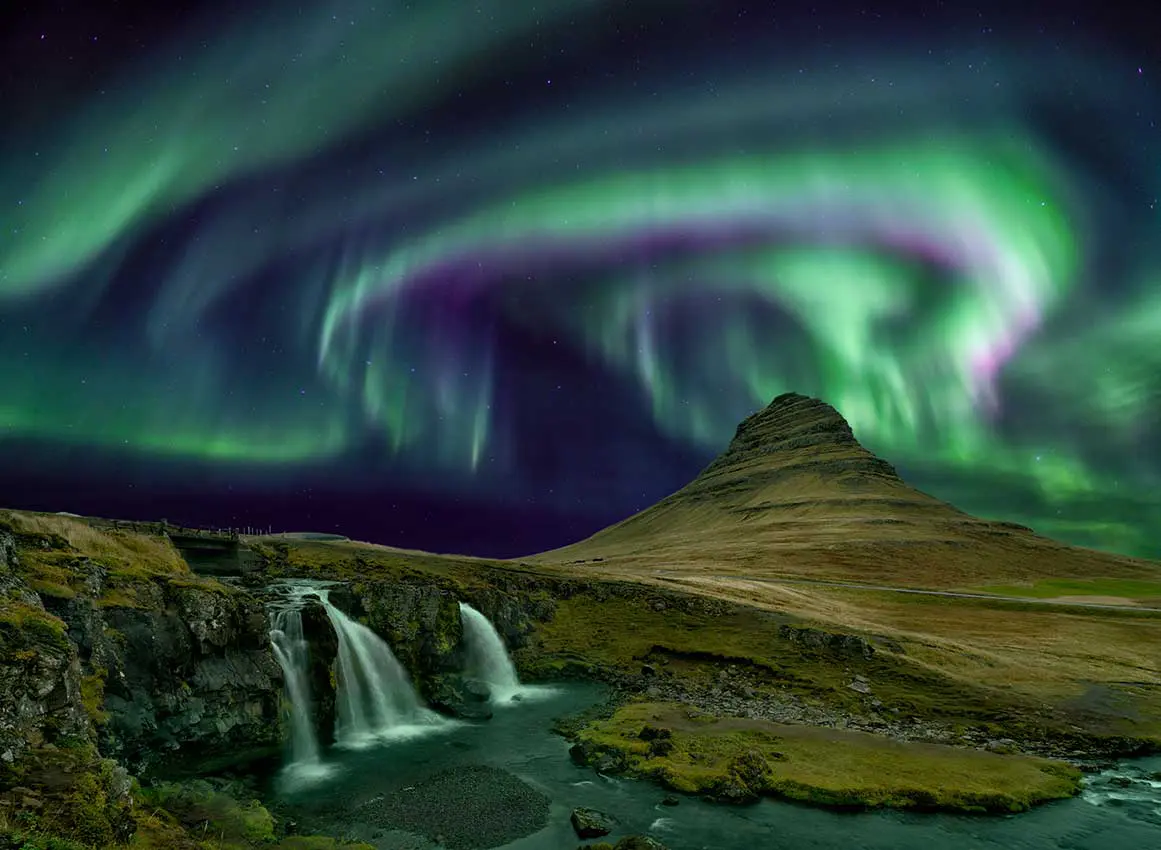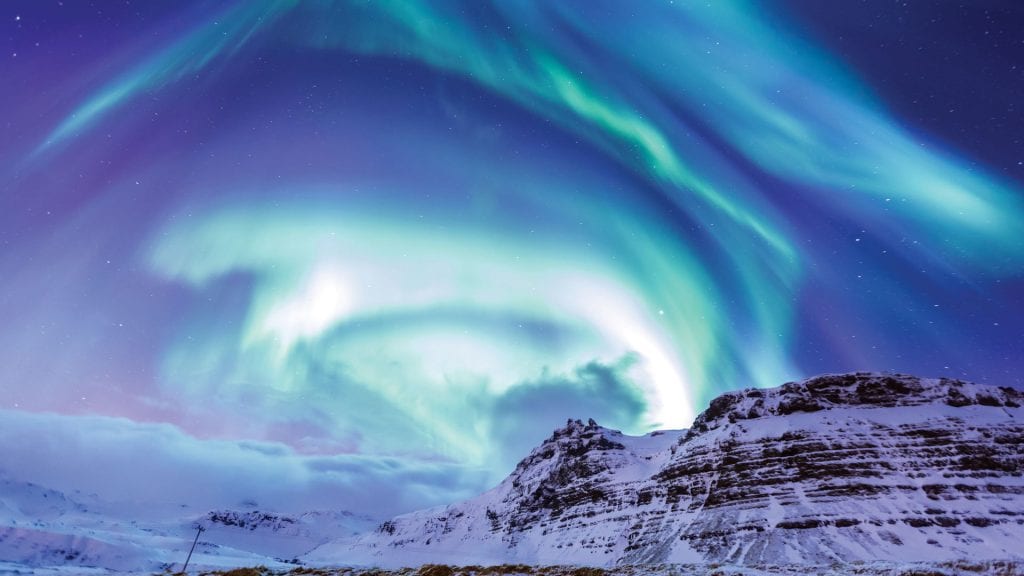Introduction
The Northern Lights, also known as the Aurora Borealis, are one of nature’s most spectacular displays. Iceland is one of the prime locations in the world to witness this breathtaking phenomenon. In this article, we’ll explore what the Northern Lights are, when they are visible in Iceland, and the best places to see them. We’ll also discuss why choosing locations with minimal light pollution is essential for an optimal viewing experience.

Understanding the Northern Lights
The Northern Lights occur when charged particles from the sun interact with the Earth’s magnetic field. This interaction produces stunning displays of colorful lights in the sky, with shades of green, pink, purple, and blue dancing across the horizon. It’s a natural wonder that has fascinated people for centuries.
When Are the Northern Lights Visible in Iceland?
The Northern Lights are visible in Iceland from late August to mid-April. However, the best time to catch a glimpse of this celestial spectacle is during the winter months, from September to March. The nights are longer during this period, providing more extended opportunities to witness the lights.

The Importance of Minimal Light Pollution
To truly appreciate the Northern Lights, choosing locations with minimal light pollution is crucial. Light pollution from cities and towns can obscure the brilliance of the Aurora Borealis. In Iceland, several remote spots offer an ideal setting for unobstructed views.
Top Places to See the Northern Lights in Iceland
- Thingvellir National Park
Distance from Reykjavik: Approximately 40 kilometers
Why it’s great: Thingvellir National Park is a UNESCO World Heritage Site and a fantastic spot for Northern Lights viewing. Its remote location away from city lights makes it an excellent choice. The park also holds historical and geological significance, adding to the overall experience.
- Landmannalaugar
Distance from Reykjavik: Around 170 kilometers
Why it’s great: Landmannalaugar is known for its otherworldly landscapes and natural hot springs. It’s a bit farther from Reykjavik, but its isolation ensures minimal light pollution. The contrast between the vibrant lights and the rugged terrain creates a surreal atmosphere.
- Vik
Distance from Reykjavik: Approximately 187 kilometers
Why it’s great: Vik, a charming coastal village, offers a unique Northern Lights experience. You can capture the auroras dancing above the dramatic black sand beaches and iconic rock formations. The lack of urban development in the area provides pristine viewing conditions.
- Snæfellsnes Peninsula
Distance from Reykjavik: About 170 kilometers
Why it’s great: This remote peninsula is a hidden gem for Northern Lights enthusiasts. With its diverse landscapes, including glaciers, lava fields, and fishing villages, Snæfellsnes offers a picturesque backdrop for your Aurora adventure.
- Akureyri
Distance from Reykjavik: Approximately 380 kilometers
Why it’s great: As Iceland’s second-largest city, Akureyri might not be as remote as other locations. However, it still boasts relatively low light pollution compared to Reykjavik. Its proximity to the Arctic Circle enhances your chances of seeing the lights.
Conclusion
Iceland is undeniably one of the best places on Earth to witness the Northern Lights. To maximize your experience, plan your visit during the winter months and head to locations like Thingvellir National Park, Landmannalaugar, Vik, Snæfellsnes Peninsula, or Akureyri. These remote spots offer the perfect conditions for a magical encounter with the Aurora Borealis. Remember to check the weather forecasts and solar activity to increase your chances of witnessing this mesmerizing natural wonder.
Start packing your warmest clothes, charge your camera, and get ready to be awestruck by the Northern Lights in Iceland! Reach out to us today to discover how we can take you on a private Northern Lights Tour in Iceland.

